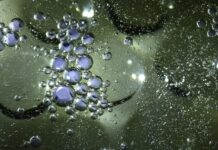Water Purification Using Nanotechnology:
Water scarcity and contamination have emerged as significant global challenges, affecting millions of people around the world. The inadequate availability of safe drinking water poses a severe threat to public health and ecosystem sustainability. To address this pressing issue, scientists and researchers have turned to nanotechnology, an innovative approach that utilizes nanoscale materials and processes to enhance water purification methods. Nanotechnology offers the potential to revolutionize water treatment by providing efficient and cost-effective solutions for removing pollutants, pathogens, and contaminants from water sources.
Nanotechnology involves the manipulation of matter on the nanoscale, typically in the range of one to 100 nanometers. At this scale, materials exhibit unique physical, chemical, and biological properties that differ from their bulk counterparts. These properties enable nanomaterials to interact with contaminants in water in highly effective ways, making them powerful tools for water purification. One of the key advantages of nanotechnology-based water purification is its ability to target specific pollutants with high precision, minimizing the need for excessive chemical treatments or energy-intensive processes.
Nanomaterials used in water purification can take various forms, including nanoparticles, nanotubes, nanofibers, and nanocomposites. These materials can be engineered to possess specific properties that optimize their interaction with contaminants. For example, nanoparticles made of metals like silver, copper, or iron can exhibit strong antimicrobial properties, making them effective in disinfecting water by deactivating bacteria and viruses. Additionally, carbon-based nanomaterials such as graphene and carbon nanotubes have exceptional adsorption capacities, allowing them to adsorb organic pollutants, heavy metals, and even some gases from water.
The application of nanotechnology in water purification encompasses several methods that target different types of contaminants. One such method is nanofiltration, which utilizes membranes composed of nanoscale pores to separate particles, ions, and molecules based on their size and charge. These membranes can effectively remove bacteria, viruses, and larger organic molecules, addressing concerns related to microbial contamination and organic pollutants. Another approach involves photocatalysis, where nanomaterials like titanium dioxide are activated by light to generate reactive oxygen species. These reactive species can break down organic compounds and pathogens into harmless byproducts, offering a promising technique for water disinfection.
Nanotechnology also plays a pivotal role in removing heavy metals from water sources. Many industrial activities result in the release of toxic metals like lead, arsenic, cadmium, and mercury into water bodies, posing serious health risks. Nanomaterials with ion-exchange properties or high surface area can effectively bind to these metal ions, removing them from the water and thus mitigating their harmful effects. Furthermore, nanotechnology-based sensors and probes enable real-time monitoring of water quality, ensuring timely detection of contaminants and preventing potential health hazards.
The integration of nanotechnology into conventional water treatment processes can enhance their overall efficiency and reduce their environmental impact. For instance, nanomaterials can be incorporated into filtration systems to improve their contaminant removal capabilities. Traditional activated carbon filters, when modified with nanomaterials, exhibit significantly increased adsorption capacities and can target a wider range of pollutants. Similarly, nanotechnology can enhance coagulation and flocculation processes by providing novel materials that promote the aggregation of fine particles, simplifying their removal from water.
In remote or disaster-stricken areas where access to clean water is limited, portable nanotechnology-based water purification devices offer a lifeline. These compact systems can be powered by renewable energy sources and can effectively treat water from various sources such as rivers, lakes, and rainwater, making it safe for consumption. The small footprint and ease of use make these devices particularly valuable for emergency response and humanitarian efforts.
Despite the remarkable potential of nanotechnology in water purification, there are also challenges and concerns that need to be addressed. The release of nanoparticles into the environment raises questions about their long-term impact on ecosystems and human health. Research is ongoing to understand the behavior and fate of these nanomaterials once they enter water bodies. Additionally, the scalability and cost-effectiveness of nanotechnology-based water purification methods require further optimization to ensure their practicality, especially in resource-limited regions.
In conclusion, water purification using nanotechnology presents a promising avenue for addressing the global challenges of water scarcity and contamination. The unique properties of nanomaterials enable efficient removal of pollutants, pathogens, and contaminants from water sources, offering a range of innovative solutions. From nanofiltration to photocatalysis, nanotechnology-based methods target various types of contaminants, enhancing the effectiveness of water treatment processes. As research and development in this field continue, it is crucial to strike a balance between harnessing the benefits of nanotechnology and addressing potential risks, ultimately paving the way for safer and more accessible clean water for all.
Efficient Contaminant Removal:
Nanotechnology enables precise targeting and removal of contaminants, including pathogens, heavy metals, organic pollutants, and even microplastics, from water sources.
Enhanced Adsorption:
Nanomaterials like graphene and carbon nanotubes exhibit exceptional adsorption capacities, allowing them to efficiently trap and remove a wide range of pollutants.
Selective Filtration:
Nanoscale membranes in processes like nanofiltration selectively separate particles based on size and charge, effectively removing bacteria, viruses, and large organic molecules.
Antimicrobial Properties:
Nanoparticles such as silver and copper possess strong antimicrobial properties, offering effective disinfection by deactivating harmful microorganisms.
Photocatalytic Disinfection:
Nanomaterials like titanium dioxide can undergo photocatalysis when exposed to light, producing reactive oxygen species that break down organic pollutants and pathogens.
Heavy Metal Removal:
Nanotechnology-based methods utilize materials with ion-exchange properties to efficiently bind and remove toxic heavy metals from water, reducing health risks.
Real-time Monitoring:
Nanosensors and probes allow continuous monitoring of water quality, enabling timely detection of contaminants and facilitating prompt corrective measures.
Integration with Conventional Methods:
Nanotechnology can enhance traditional water treatment processes such as filtration, coagulation, and flocculation, improving their efficiency and contaminant removal capabilities.
Portable Purification Devices:
Compact nanotechnology-based devices offer portable and efficient water purification solutions for remote areas and emergency situations, powered by renewable energy sources.
Environmental Concerns:
While promising, nanotechnology in water purification raises concerns about the environmental impact of released nanoparticles, necessitating ongoing research to understand potential long-term effects.
These key features collectively illustrate the transformative potential of nanotechnology in revolutionizing water purification techniques to address global water challenges.
Water scarcity and contamination have become critical global issues, affecting both developed and developing nations. As the world’s population continues to grow, the demand for clean and safe drinking water has intensified, placing unprecedented stress on existing water resources. The significance of finding effective and sustainable solutions to these challenges cannot be overstated, and nanotechnology has emerged as a promising frontier in the field of water purification.
Nanotechnology operates at the nanoscale, where materials exhibit unique properties due to their small size and increased surface area. This realm, which ranges from one to 100 nanometers, offers novel opportunities for addressing complex problems in various industries, including water treatment. In the context of water purification, nanotechnology leverages these distinct properties to develop innovative materials and processes that enhance the efficiency and effectiveness of removing contaminants from water sources.
One of the central advantages of nanotechnology in water purification lies in its versatility. Nanomaterials can be designed and engineered with precision to target specific pollutants, adapting to the diverse range of contaminants found in different water sources. Whether the challenge is removing heavy metals from industrial runoff or disinfecting waterborne pathogens in a rural community, nanotechnology provides a toolbox of solutions that can be tailored to the unique needs of each situation.
The utilization of nanotechnology in water purification can significantly reduce the reliance on conventional chemical treatments that often introduce additional pollutants or pose challenges in disposal. The specificity of nanomaterial interactions enables the development of processes that minimize the use of harsh chemicals, promoting more sustainable and eco-friendly water treatment methods. This not only benefits the environment but also contributes to the long-term health and well-being of communities reliant on these water sources.
Nanomaterials’ ability to adsorb pollutants and contaminants is another compelling aspect of their application in water purification. Traditional adsorbents, like activated carbon, have limitations in terms of surface area and adsorption capacity. Nanomaterials, on the other hand, can be engineered to possess an enormous surface area, allowing for significantly higher levels of pollutant adsorption. This increased capacity translates to smaller treatment systems that can handle larger volumes of water, making nanotechnology a practical solution for scaling up water purification efforts.
Moreover, nanotechnology can revolutionize the process of desalination, which has become increasingly crucial as freshwater sources dwindle in arid regions. Desalination involves removing salt and other impurities from seawater or brackish water to make it suitable for drinking and irrigation. Traditional desalination methods are energy-intensive and often inefficient. However, nanotechnology offers potential breakthroughs in membrane-based desalination processes, enabling more efficient separation of salts from water while reducing energy consumption.
In addition to its technical innovations, the integration of nanotechnology into water purification systems also holds economic promise. The modular nature of many nanotechnology-based solutions allows for decentralized water treatment setups, reducing the need for extensive and expensive centralized infrastructure. This is particularly advantageous in remote and underserved areas where building large-scale water treatment plants may not be feasible. As a result, nanotechnology has the potential to democratize access to clean water, promoting greater equity and social development.
The field of nanotechnology is fueled by ongoing research and development, which is yielding a continuous stream of advancements. Scientists and engineers are exploring new nanomaterials, refining fabrication techniques, and investigating novel applications that extend beyond what is currently possible. This dynamism ensures that the potential of nanotechnology in water purification is far from fully realized, and the coming years are likely to bring forth even more innovative solutions to address water-related challenges.
Despite the immense promise, challenges remain in the widespread adoption of nanotechnology for water purification. Regulatory frameworks need to be established to ensure the safety of nanomaterials in both their application and potential release into the environment. The long-term effects of nanoparticles on human health and ecosystems are areas that require thorough investigation to mitigate any unforeseen consequences.
In conclusion, the synergy between nanotechnology and water purification holds immense potential for transforming how we address water scarcity and contamination. The adaptability, efficiency, and sustainability offered by nanomaterials and processes provide a valuable toolkit for tackling the complex and pressing challenges associated with ensuring access to clean and safe drinking water for all. As research and development in this field continue to advance, the vision of a world where nanotechnology plays a pivotal role in securing water resources for future generations becomes increasingly attainable.


















